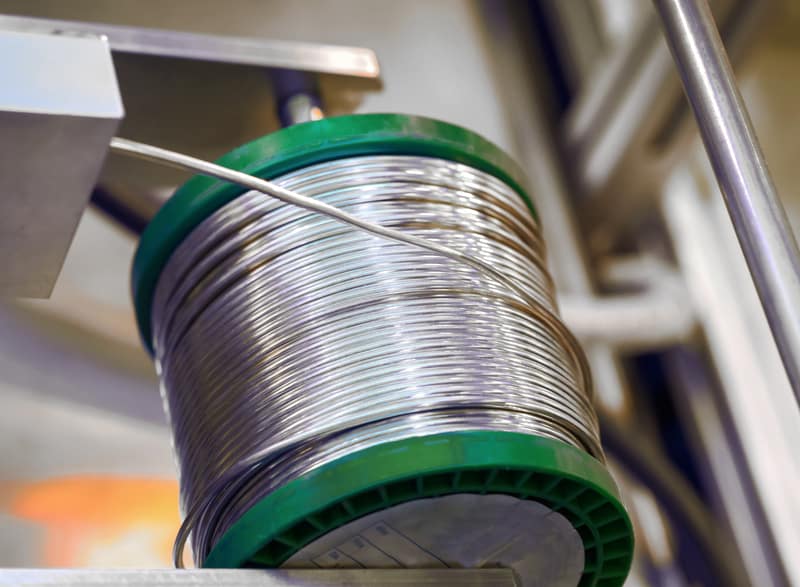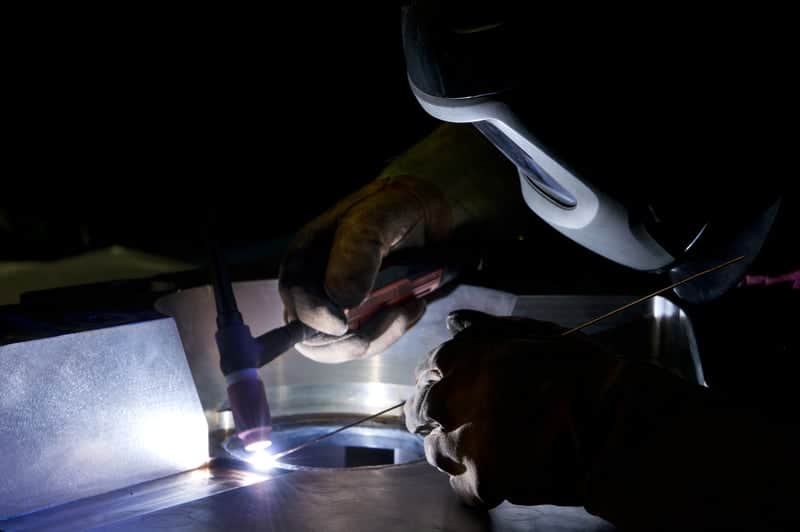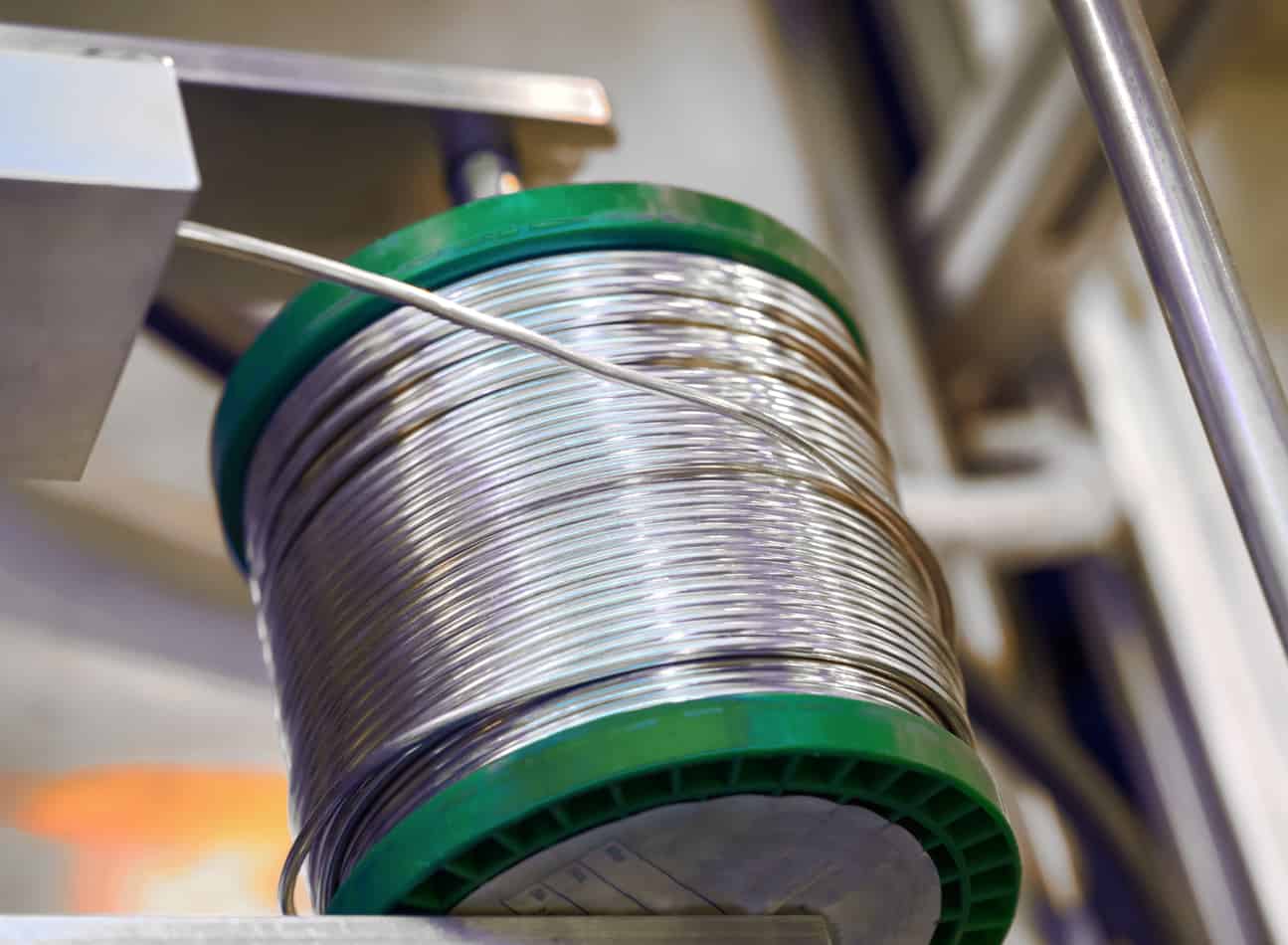“This post contains affiliate links, and I will be compensated if you make a purchase after clicking on my links.”
When joining metals, the three methods available are welding, brazing, and soldering. Welding offers joints the most potential tensile strength, while soldering tends to offer joints with the weakest tensile strength. That is unless you are using silver solder, which is closer in technique to brazing and is said to provide tensile strength comparable to some welds.
Silver solders’ tensile strength typically ranges from 40,000-70,000 pounds per square inch (psi). Adding silver to a copper brazing alloy will result in a lower melting point and higher fluidity. The fluidity helps the molten metal to penetrate the gap better, creating a smooth, sealed joint.
There is more to silver solder than the strength it can provide. Read on to learn more about the various joining techniques, how some methods are very much alike, how they are different, and what properties silver can add to an alloy.
Comparing Joining Techniques

Before delving into the various strengths of silver solder, it may help to know some key differences between the various joining techniques. Knowing key differences and similarities will help to better understand why silver soldering offers the strength it does.
| Soldering | Silver Soldering | Brazing | Welding | |
| How It Is Accomplished | Two or more metals are connected with a filler metal with a melting point lower than the materials being joined. The melted material is drawn into the joint by capillary action. | (See Soldering) | (See Soldering) | The base metals are fused while melted |
| Melting Point of Filler Metal | Less than 840°F | 1200° – 1436°F | 1150°F – 1600°F° | Varies by melting points of different metals |
| Applications | Metals can be dissimilar | Metals can be dissimilar | Metals can be dissimilar | Metals must be similar |
| Permanence of Joint | Semi-permanent | Semi-permanent | Semi-permanent | Permanent |
As you see, soldering, silver soldering, and brazing are very similar; the primary difference is the temperature at which the filler metal melts. When soldering, the joint’s base metals are usually stronger than the solder; this can cause failure at the joint. When brazing and silver soldering, the joint can be as strong or stronger than the base metals if done correctly.
Silver Soldering Vs. Soldering
Soldering, or soft soldering, is any joining of metals using a filler metal that melts below 840°F. Note that the melting points for silver soldering are considerably higher. “Silver solder” is a misnomer and is a form of brazing. It is sometimes referred to as “silver braze.” The American Welding Society discourages the term “silver solder.”
Soft soldering alloys are commonly made from a combination of tin and either lead, antimony, silver, zinc, or bismuth. The amount of silver in these alloys is small (4 or 5%). Silver soldering alloys are typically alloys of copper, potentially some other metal, and varying amounts of silver.
Silver Soldering Vs. Brazing
Wait, silver soldering is brazing, right? Yes. Well, a square may be a rectangle, but that doesn’t mean a rectangle is a square. Two key differences between brazing and silver soldering are:
- Silver soldering is more fluid than other brazing fillers.
- Silver soldered joints require an overlap of material to create a strong bond while brazed joints do not.
Brazing fillers are usually copper alloys, but they can also be alloys made primarily of nickel. The other metals often used in these alloys are phosphorous, silver, silicon, tin, or zinc. Silver solders are simply brazing fillers that have a higher percentage of silver in them.
Welding Vs. Brazing and Soldering

Brazing and soldering join two or more metals by using a melted metal filler as an adhesive. The filler has a lower melting point and will be liquid while the base metals remain solid. Capillary action causes the liquid metal to be pulled into the microscopic pores of the solid metal. These joints are only semi-permanent as the joint filler can be melted again.
Welding is the fusion of two or more metals by melting the base metals together at the joint with molten metal from an electrode. The metals must have similar melting points. Otherwise, a metal with a much lower melting point will be a mess when the other metal is ready. This joint is considered permanent: for the two pieces to be separated, they will have to be cut.
The strength of a welded joint relies not only on the power of the base metal itself but also the weld being used and the amount of metal from the electrode that penetrates the joint. Ideally, the weld will be as strong as the materials being joined, but it cannot be any stronger.
Some advantages that brazing has over welding are:
- Physical properties of metals are not lost by being melted
- It’s easier to join dissimilar metals
- Joints are smooth and need compared to the irregular bead of a welded joint
- It doesn’t require as much skill to do
Source: Lucas Milhaupt; Cooks On Gold; The Welders Warehouse; Copper Development Association Inc; SpringerLink; TWI-Global; Aufhauser Corporation; Washington Post; Michigan State University College of Engineering; Weld Guru; Engineering Toolbox
Reasons for Using Silver
Silver, like gold and platinum, is considered a precious metal; it is not cheap to use. So why would it be used for applications like connecting pipes and other metals? Adding silver to an alloy changes its properties in ways that make it worthwhile for the consumer to spend the money. Here are some reasons to use silver solder.
Silver Lowers the Melting Point in Copper Alloys
The most common silver solders and their approximate melting points are 33% silver / 1328°F, 40% silver / 1247°F, and 55% / 1202°F. Due to the different melting points, one can layer the metal in the joint without remelting previous work.
Phosphorus also lowers the temperature, but much more so than silver; 1% of phosphorous can lower the melting point by up to 120°F, whereas 1% of silver will only reduce it by around 15°F at most. Adding silver in place of phosphorous allows more control over the melting point.
Silver Tends to Increase the Range of The Melting Point
In addition to lowering the melting point of an alloy, silver also has a tendency to increase the melting range. When a pure metal melts, it goes from solid to liquid as soon as it reaches its melting point. Alloys melt slowly, having a point where they are totally solid and a point where they are totally liquid. A wide melting range is useful when brazing a wide gap in a joint.
Adding Silver in Place of Phosphorous Improves Ductility
Many believe that adding silver improves an alloy’s capacity to change physical form without breaking. According to the late Richard E. Ballentine, former Director of Research and Development for The Harris Products Group, this is false. Both silver and phosphorous reduce ductility in copper.
However, much like lowering the melting point, phosphorous on ductility is much more noticeable. Adding silver in sufficient quantities to reduce phosphorous without sacrificing melting point improves the ductility of the alloy.
Source: How Stuff Works; Emerald Insight
Misconception: Silver Makes Solder Conductive
Pure silver is the best conductor of electricity, so it would make sense that one would think it improves the conductivity of an alloy used for soldering/brazing. Silver is also expensive and tends to tarnish. Copper, by comparison, is cheap, and it’s also second in conductivity only to silver. Imagine that, silver takes the gold, and copper takes the silver.
Source: The Silver Institute; Quest Tech; Tampa Steel
Conclusion
Silver soldering offers strength comparable to other brazing metal fillers. While these joints may not be as strong as welded joints, they offer their own advantages. Where silver really makes an impact is on the melting point and melting range of the alloys used for brazing.





1 thought on “How Strong Is Silver Solder Really?”